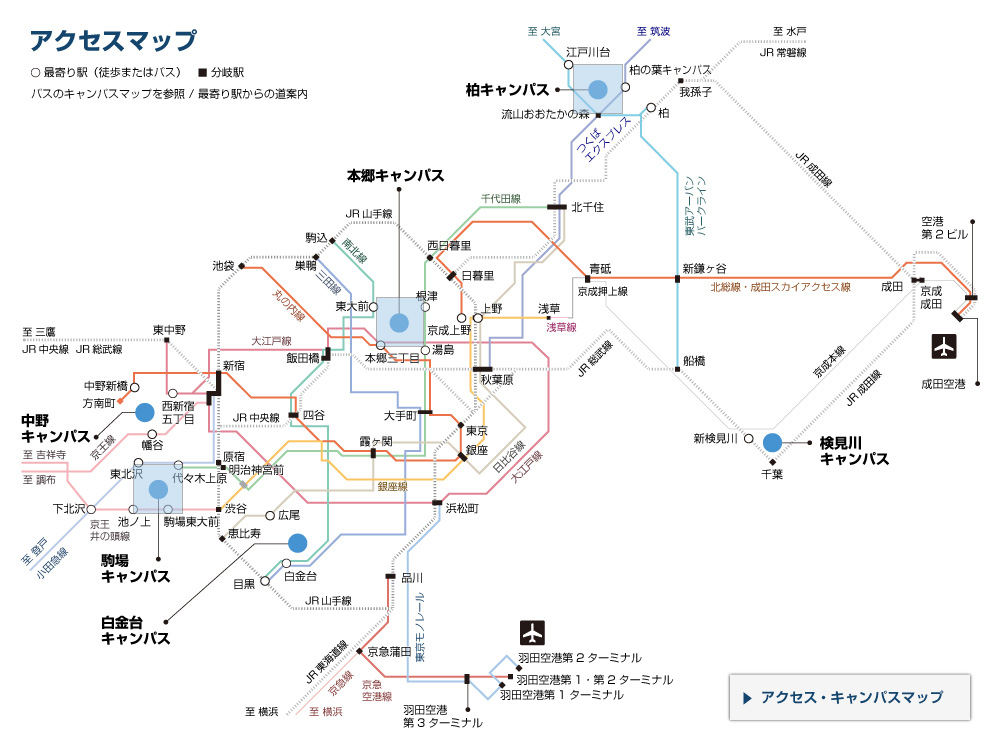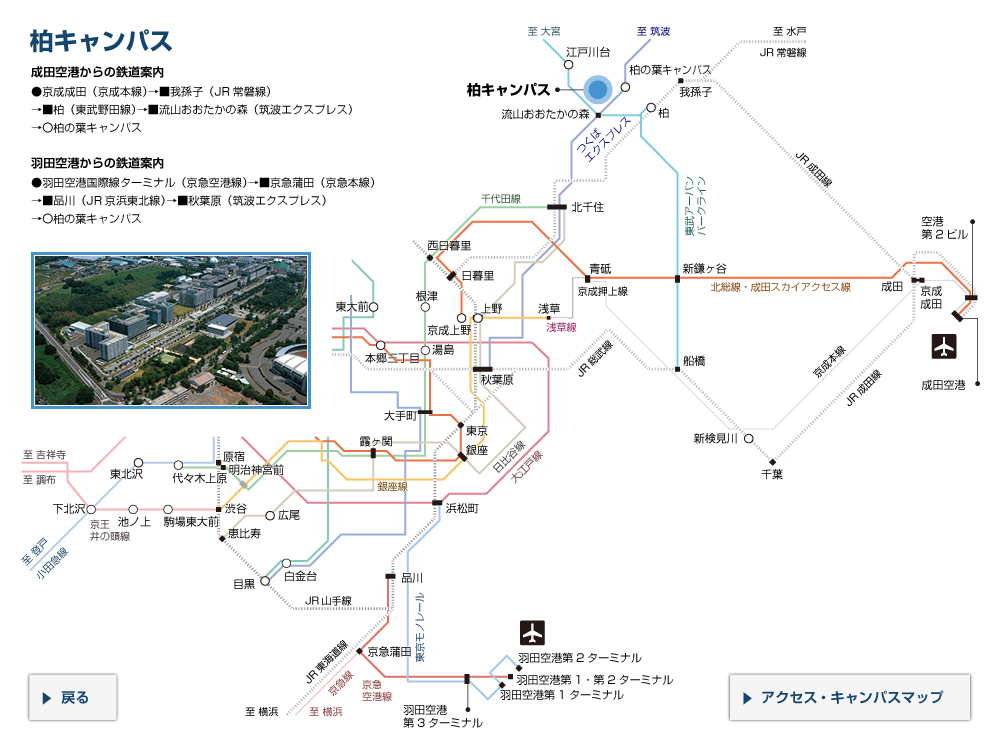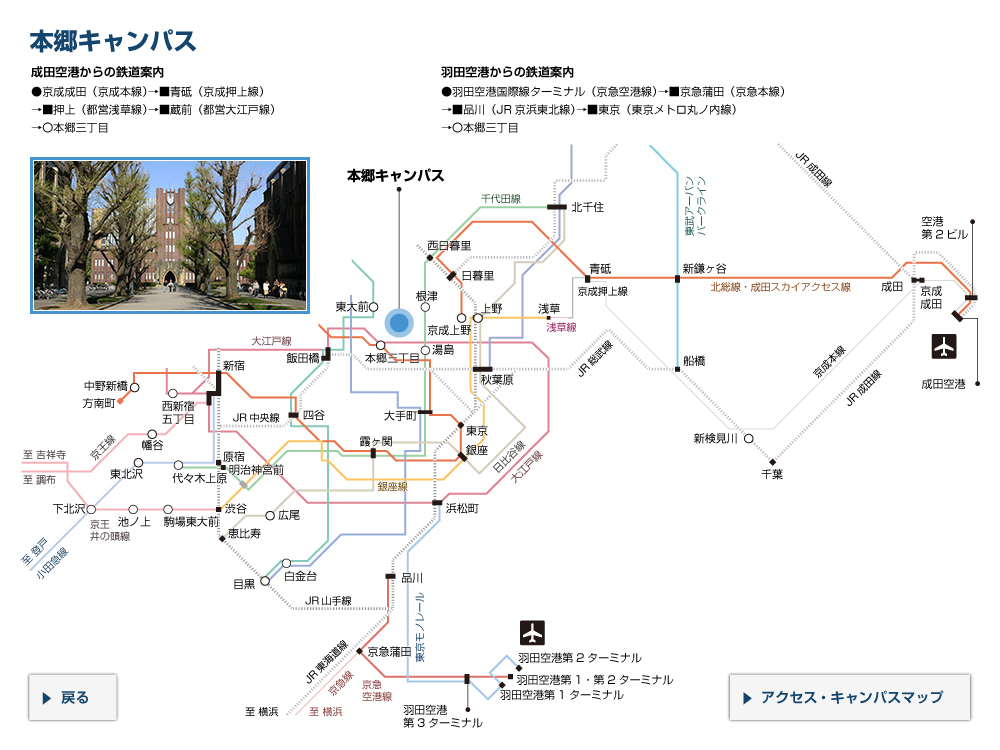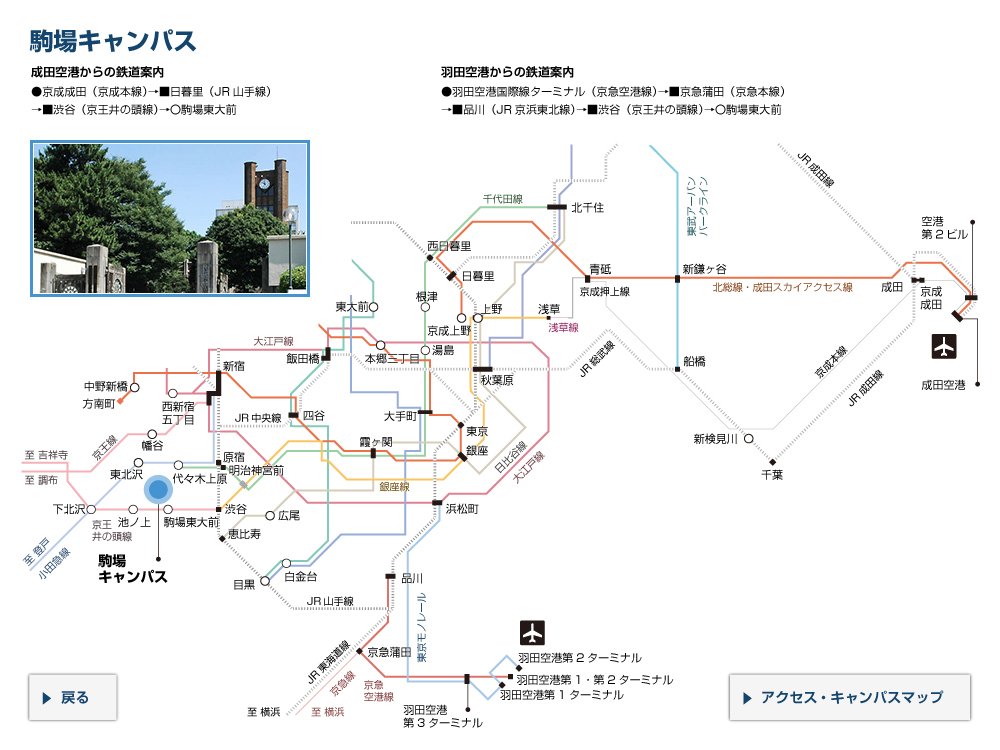平成29年度秋季学位記授与式・卒業式 総長告辞
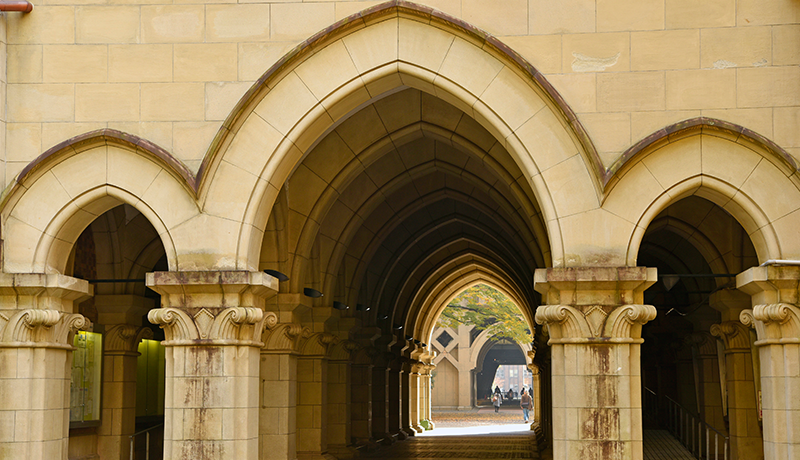

式辞・告辞集 平成29年度秋季学位記授与式・卒業式 総長告辞
Address of the President of the University of Tokyo
at the 2017 Autumn Semester Diploma Presentation/Commencement Ceremony
Many congratulations to all of you. You have been awarded a doctor’s, master’s, professional, or bachelor’s degree by the University of Tokyo. On behalf of the University, I extend my sincere congratulations. I also congratulate your families, who have supported you through your studies, and are present here today to join you in these celebrations.
582 graduate students completed programs this autumn. Of these, there are 262 doctoral degree program graduates, 271 master’s degree program graduates, and 49 professional degree program graduates. 61 undergraduate students have also graduated. Of these, 25 are graduates of Programs in English at Komaba, or PEAK, an English-language undergraduate degree program. Further, 5 are the graduates of the Global Science Course of the Faculty of Science, an English-language undergraduate transfer program for those who started their study at foreign universities. 400 of our students, or about 60%, come from outside Japan.
This April, the University of Tokyo celebrated its 140th anniversary. You are graduating during this memorable year in the history of the University.
The first 70 years of the University of Tokyo coincided with the modernization of Japan, which began with the opening of the country to the world. One of the University’s first functions was to educate highly talented professionals to work with the Meiji government and transform Japan into a modern state. The aim was to gain acceptance from international society. In the beginning, the University embraced Western learning. But it also developed new learning by integrating Eastern and Western approaches. This has become a tradition at the University of Tokyo.
The second 70 years started with the reconstruction of Japan, physically and socially, after World War II. In the latter half of the 20th century, innovation in science and technology helped drive industrialization, expanding the global economy. In the meantime, fortunately, Japan achieved rapid economic growth and developed into one of the world’s most advanced and peaceful states. In this period, too, the University played an important role by educating many highly-skilled professionals for all areas of Japanese society.
Now, the University of Tokyo has just embarked on the journey of its third 70 years, a period we name “UTokyo 3.0.” In this time, we must envision the future direction of our society, and create new value aiming to contribute to the common good of humanity. This is the first year in this great project. You are the first of our graduates whose working lives will take place in this new era of UTokyo 3.0.
In this period of UTokyo 3.0, the University of Tokyo is working to create a better future for society. It is important that you also create your own future rather than wait for it to happen. I hope you will enjoy fulfilling lives after graduation and will contribute to the common good.
Today, I would like to tell you about two topics that might provide you with some hints for navigating your future. One is about our lifespan, the other about water and the environment.
As you all know, Japanese average life expectancy has become longer over the last century. According to the latest survey in July, life expectancy reached a new high. There are nearly 70,000 people over 100 years old in Japan, and the number is increasing by about 2,000 each year. In January this year, one academic society made a proposal to raise the definition of when senior citizenship starts from the current 65 years old. Indeed, people can work until an older age than before. This trend is true not just of Japan but also of many other countries thanks to improved nutrition and public health. I am certain that the coming 70 years will see the emergence of an entirely new and unprecedented society, in which we live together with a great number of senior citizens.
In June, the University of Tokyo became a designated national university corporation. This means that the University has greater autonomy. I would like to make good use of this greater freedom to start a new program in the next academic year. Under the current system, our academic staff retire at the age of 65. I plan to introduce a new system that will allow retirees who are still active to continue working with the University in some way. You might think such re-employment could take away jobs from young people. In fact, our objective is the opposite. This new system is intended to enable senior members to utilize their experiences to support the university. Meanwhile, this will allow us to hire more talented young individuals and give them time to engage fully in research and education. And of course, give more time for life events outside the university, involving your families, your personal goals, your health and personal activities. In other words, the system is designed to generate synergies between senior and younger members.
Instead of only the younger generation supporting the elderly, this will facilitate a system in which more older members are also able to support their younger colleagues. I hope this system will serve as a sustainable model for active social participation by people of all ages. We are aiming to create such models and present them to the world so that many people can benefit from them.
You have many years ahead of you, and some may be worried about future uncertainty. In my opinion, a longer life span means a longer period of time for activity and greater opportunities. You may experience setbacks, but taking on challenges time and again will surely enrich your lives. I hope you will take full advantage of the long time you have ahead of you.
Now, let us turn our eyes to the world. The 21st century has seen even more rapid advances in science and technology, as well as continued population growth. Meanwhile, humanity faces many shared challenges: environmental degradation, increased regional disparity, religious conflicts and other problems. We have long regarded our Mother Earth as a limitless and unchanging home. But we have come to realize that the earth is not infinite.
We face the challenge of how to preserve this finite, shrinking earth. We need to achieve sustainable development of humankind and the earth as a whole. At the same time, we need to encourage individuals to engage freely in the activities they choose. As one possible approach, let me talk about a case involving something that you are all familiar with: water.
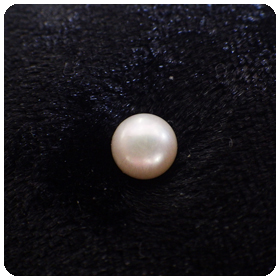
Miura pearl
Today I’ve brought something with me. It’s so small you probably can’t see it from your seats, but this is a pearl.
Diamonds and other jewels gain their brilliance only after being processed by human hands. But pearls are nature’s work of art. The School of Science has a Marine Biological Station in Misaki on the southwestern tip of the Miura Peninsula, in Kanagawa Prefecture. The station is one of the oldest marine research facilities in the world and marked its 130th anniversary last year. This facility was built at the suggestion of American zoologist Edward Morse, who discovered the Omori shell mound.
Professor Morse came to Japan to verify the Darwin’s theory of evolution. It was in 1877, the year when the University of Tokyo was founded. He was the first professor of zoology at the University. Convinced that diverse marine organisms would play an important role in the development of zoology, Professor Morse proposed that the University should establish a marine research station. The University took up his proposal and set up this station in Misaki, a location with rich marine biodiversity.
It was at this marine research station that the world’s first pearl farming was conducted. About 130 years ago, Professor Kakichi Mitsukuri became the first Japanese professor of zoology at the Faculty of Science and the first director of the Misaki Marine Biological Station. He earned his doctorate in the United States for research on shellfish. In this station, he researched pearl farming and encouraged and instructed Kokichi Mikimoto, the founder of the Mikimoto company, on how to produce cultured pearls. Mr. Mikimoto later succeeded in establishing pearl farming in Ise-Shima, Mie Prefecture, and became very successful in the pearl business. It all started from the pearl farming at the University’s marine station on the Miura Peninsula.
Clean seawater is essential for pearl farming. Unfortunately, in the years that followed, the quality of seawater in the Miura area deteriorated because of industrialization, making it impossible to produce cultured pearls.
Many decades since then, a change in public mindset combined with government efforts have greatly improved the quality of water on the Miura Peninsula and rivers in and around Tokyo. In 2013, the University of Tokyo, Kanagawa Prefecture and other organizations worked together to launch the “Miura pearl project” to revive pearl farming. This is a Miura pearl produced by that project.
During the rapid growth after the war, Japan experienced serious environmental pollution. However, Japan overcame such problems through pioneering efforts, making the seas around Misaki clean again. It enabled us to preserve and pass on to the next generation the wealth of biodiversity surrounding Misaki, or what biologists worldwide used to call “the sea of miracles.”
The Misaki pearl project is the symbol of this broad and sustained effort.
It is our duty to preserve a pleasant, beautiful environment not just for our own generation but also for the next generation. As graduates of the University of Tokyo, every one of you has the responsibility to take the lead in preserving our environment. Whenever you see a pearl in the future, I hope you will remember this story about the revival of the Miura pearl, and remember that anything is possible if you set your mind to it.
You have made many friends at the University of Tokyo, a meeting place of excellent students and researchers from around the world. You have met with people of different nationalities, religions and with different values, and you have learned about the importance of appreciating and respecting such diversity. I believe that the ties you have built at this University will help you in your life ahead. I hope that you will keep this global awareness and tackle issues, such as human rights, inequality and environmental problems.
The unfading beauty of the perfectly round pearl is often taken to represent longevity, good health and happiness. As such, pearls have traditionally been used as accessories and gifts. I hope you all will enjoy good health and make the most of your time in this age of longevity. I hope you will contribute to making a peaceful and sustainable world by using your strengths and ties developed at the University of Tokyo to create new value and contribute to the collective wisdom of humanity.
You are graduating from the University of Tokyo today, but your pursuit of knowledge will never end. Your ties with the University will continue throughout your life. We will continue to support your activities in the future. Your diploma is proof of our pledge that we will continue to work with you for the peace and well-being of all humanity. There may come a time in your life when you want to take a pause and prepare for a new challenge. The University of Tokyo will always be here to welcome you back. Please make use of what the University can offer.
As alumni, I ask that you do all you can to make the University of Tokyo a better place for education and research for all our members, past, present, and future.
Finally, I would like to wish you all well and every success in your future lives.
Congratulations!
Makoto Gonokami
President
The University of Tokyo
September 15, 2017
(和文)平成29年度秋季学位記授与式・卒業式総長告辞
本日ここに学位記を授与される皆さん、おめでとうございます。東京大学教職員を代表して、心よりお祝いを申し上げます。また、皆さんをこれまで励まし支えてくださったご家族の方々にもお祝いと感謝の気持ちをお伝えいたします。
この秋、大学院を修了する方は582名で、その内訳は博士課程が262名、修士課程が271名、専門職学位課程が49名です。学部生は61名が卒業を迎えます。このうちPEAKという高校まで日本語以外で教育を受けた学生を対象としたコースの卒業生が25名、また日本以外の大学学部からの編入生を受け入れるグローバルサイエンスコースの卒業生が5名になります。秋季卒業生中、いわゆる留学生に当たる学生は400名となり全体の約6割を占めています。
東京大学は本年4月に140周年を迎えました。皆さんはその記念すべき年の卒業生です。
前半の70年は、開国によって、国際社会で認められるために、明治政府のもとで近代国家としての形を整え、それを担う人材を育成することからはじまります。そのために西洋の学問を旺盛に取り入れますが、その中で東洋と西洋の異なる学問を融合し新たな学問を創り出すという東京大学の伝統が築かれました。
後半の70年は、敗戦からの復興から始まります。20世紀後半は科学技術の革新を牽引力とし、工業化が進み、世界経済は飛躍的に拡大しました。その中で日本は高度経済成長を達成しました。そして幸い世界有数の先進国としての地位と平和な社会を獲得しました。ここでも東京大学は、最先端の学術研究を学んだ人材を社会の各方面に送り出し、大きな役割を果たしてきました。
そして今、東京大学の次の70年、私たちはその第三期を「UTokyo3.0」と名付けて、歩みはじめたのです。この先の70年は、人類社会のあるべき姿を描き出し、新たな価値を創造し、それを人類が享受する期間とすべきです。今年がその元年ということになります。みなさんはこの「UTokyo3.0」時代の最初の卒業生なのです。
重要なことは未来は決して与えられるものではなく、皆さんがこれから築き上げていくものだということです。これからの70年を皆さん自身が実りある時間にするためのヒントとなることを2つお話ししたいと思います。1つは人生の時間について、もう1つは水と地球環境の話です。
ご存知のように日本人の平均寿命は統計を取り始めた100年ほど前から年々伸び続けています。今年7月の最新の調査でも過去最高を記録しました。今では100歳を超えている人も日本だけで7万人近くおり、その数は毎年約2000名ずつ増えているそうです。今年の1月にある学会から「高齢者」の定義を現在の65歳からさらに引き上げたらどうかという提言が出されました。確かに元気で働ける年齢は延びております。これは日本だけの現象ではなく、多くの国々で栄養状態と環境衛生の改善が進み、同様の傾向にあります。次の70年は間違いなく、多くの高齢者とともに生きる、歴史上かつてない社会となるでしょう。
東京大学はこの6月に指定国立大学法人となりました。指定国立大学法人とは簡単に言えば大学の裁量の幅が広く認められ、独自の運営が許された大学になったということです。この自由度を活かして、1つの試みを来年度から行いたいと思っています。65歳で定年退職した方々が大学から離れてしまうのではなく、まだまだ元気で活力のある方には、さらに継続して活躍していただける仕組みを導入したいと考えています。このように言うと、その分若い人のポジションが減ってしまうのではないかと心配になるかもしれません。東京大学のプランは全く逆です。65歳以上のシニアパワーには、経験を活かして大学運営を支えていただき、むしろより多くの若い世代を雇用し、彼らがより余裕を持って、ライフイベントにも時間を使える中で、研究教育に没頭できるようにするのです。シニアと若者がシナジー効果を発揮して共に活躍する仕組みです。
これは、若い世代がシニアを支えるだけではなく、シニアも若手のサポートができるような、多様な世代が能動的に社会と関われる持続可能な社会のモデルとなるものです。東京大学はこのような仕組みを社会に提案し、それを世界に発信していきたいと考えています。
皆さんの中には、将来が長いということで、その分先が見えず、不確実で心配だと感じている人もあると思います。しかし、人生の時間、活躍の時間が長くなったことは、やはり大きなチャンスなのです。何度も、諦めずに、いろんなことにチャレンジすることで、皆さんの人生を豊かなものにし、その時間を存分に活用してほしいのです。
さてここで、世界に目を向けてみましょう。21世紀に入ってからも科学技術の進歩はいっそう加速し、人口も増加しています。しかし、同時に環境破壊、地域間格差、宗教対立の深刻化など、人類全体の持続を脅かす課題は、ますます複雑さと深刻さを増しています。「母なる大地」という言葉のように大きく盤石だと感じていた地球も、限りある空間であることを意識せざるを得なくなっています
個々の人々は自由で活発に活動しながらも、このように有限化した地球、すなわち「小さくなった地球」を守りながら、人類と地球が全体として調和のとれた発展を続けるにはどうすべきなのでしょうか。
この問いについて考えるヒントとして、皆さんにも身近な「水」を例に、具体的な話を1つ紹介いたします。
今日皆さんにお見せしようと思って持ってきた物があります。でもちょっと小さいので、皆さんの席からはわからないかも知れません。

三浦真珠
これは真珠です。
ダイヤモンドなどの宝石は人の手で加工して、初めて輝きを得ますが、真珠はまさに自然が作り出す芸術品です。神奈川県の三浦半島の三崎という場所に東京大学の理学系研究科附属の臨海実験所があります。昨年130周年を迎えた世界で最も古い歴史ある臨海実験所の1つです。この施設の建設を提案したのは、あの大森貝塚を発見したモースです。モースは進化論を検証するため、東京大学が創設された年に来日し、東京大学で動物学の初代教授を務めました。モースは生物学の発展に多様な海洋生物が重要な役割を担うことを確信しており、東京大学に臨海実験所を設立するように進言しました。これを受けて、東京大学は生物の多様性が極めて豊かな三崎に臨海実験所を設立しました。
この三崎の臨海実験所で世界ではじめての真珠の養殖が行われたのです。今から遡ること約130年前に、箕作佳吉(みつくりかきち)先生がアメリカで貝の研究で学位を取得し、帰国後、本学理学部で日本人として最初の動物学の教授となり、三崎臨海実験所の初代所長となりました。そこで真珠養殖の研究を行い、株式会社ミキモトの創始者御木本幸吉氏に真珠の養殖業を勧め技術を教えました。御木本氏はその後伊勢の志摩で真珠の養殖を行い大成功したわけです。その発端となったのが、三浦の真珠です。しかし真珠の養殖には綺麗な海水が欠かせません。残念なことにその後、近隣の工業化が進み、三浦近海の水質が悪化し、真珠を作ることが出来なくなってしまいました。
しかし、長い年月を経て、市民の意識改革と行政の努力により、三浦半島、東京周辺の河川も含めた水質が劇的に改善されました。それで4年前の2013年に東京大学、神奈川県などが協力して「三浦真珠プロジェクト」を復活させることになりました。これがそのプロジェクトで作られた三浦真珠なのです。
日本は戦後の高度経済成長の中で、深刻な環境汚染を経験しました。それを克服するための先進的な取り組みが効果を上げ、海もきれいに戻すことが出来たのです。そのおかげで、世界の生物学者達が「奇跡の海」と呼ぶ生物多様性の宝庫とされる三崎の環境を、ふたたび後の世代に伝えることが出来るようになったのです。
三崎真珠プロジェクトはまさにその象徴です。
自分たちの世代だけではなく、次世代にも心地よく美しい生活環境を継承することは私達の大きな使命です。世界のリーディング大学である東京大学を卒業した皆さんはその先頭に立って行動する義務があります。皆さんが真珠を見たときに、是非この三浦真珠復活の話、そしてやればできるということを思い出してください。
皆さんは多くの国からきた優秀な学生が集う東京大学で、多くの友人を作り、世界には人種、宗教や様々な価値観が存在することを体感し、理解し、それらを尊重する精神の大切さを学びました。この東京大学で育んだ絆は、皆さんのこれからの人生を支える糧となるはずです。そして、常に世界を胸に抱き人権、格差、環境などの国境を越える課題に取り組み、挑戦を続けてほしいのです。
丸くて美しくいつまでも色褪せない真珠は「長寿、健康、円満」の象徴として古くから装飾や贈り物に用いられています。皆さんには、健康に留意し、長寿化によって得る人生の時間を存分に楽しんでもらいたいと思います。そして、東京大学で培った力と絆を活用して、新しい価値の創造に人類の叡智が注ぎ込めるよう平和で持続可能な地球社会の実現に貢献されることを期待しています。
皆さんは本日東京大学を卒業されます。卒業は終わりではありません。東京大学とのつながりは永遠です。東京大学は今後も皆さんの活動を応援し続けます。学位記は、今後も皆さんと東京大学が人類の幸福のために一緒に行動していくことを約束する証明書でもあります。これからの人生の中で一旦立ち止まり新たな挑戦に備えたいと思う時があるかもしれません。そのときは、是非東京大学を活用してください。東京大学は常に、皆さんを歓迎します。
皆さんにも東京大学がよりよい教育研究の場となる為に、卒業生だからできること、卒業生にしかできないことを是非していただきたいと思います。
最後になりますが、皆さんがそれぞれの分野で元気に活躍されることを祈念してお祝いの言葉とさせていただきます。
ご卒業おめでとう。
平成29年9月15日
東京大学総長 五神 真
- カテゴリナビ



